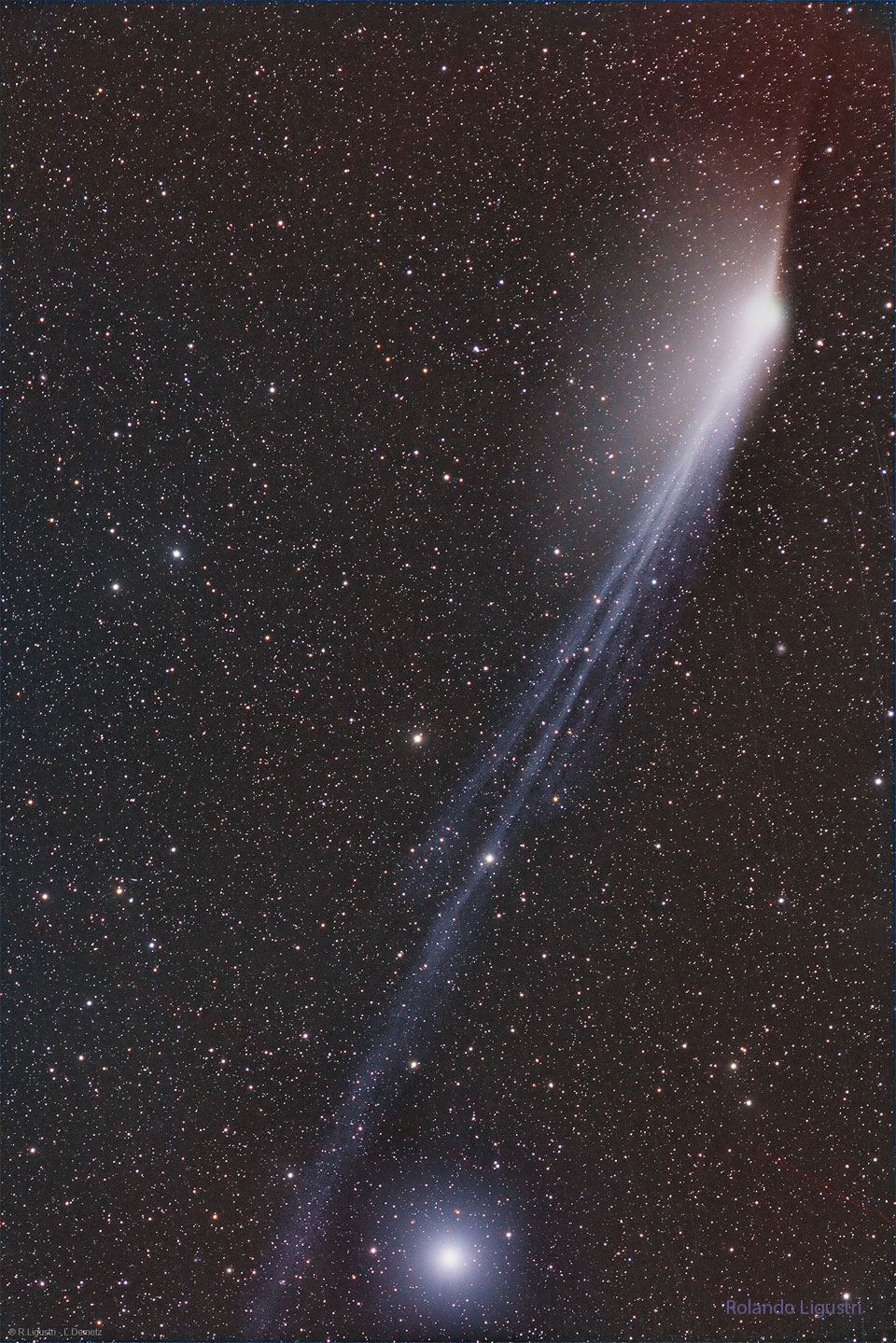龐斯-布魯克斯彗星出現相反的尾巴
Comet Pons-Brooks Develops Opposing Tails

來源:Rolando Ligustri &
Lukas Demetz|發表日期:2024-06-04
為什麼龐斯-布魯克斯彗星現在有指向相反方向的尾巴? 最壯觀的尾巴是發藍光的離子尾巴,可以看到它順著影像流下。 離子尾由太陽風直接從太陽推出。右上方是 12 P/Pons-Brooks 彗星發光的中央彗尾。從彗星彗尾向外延伸,主要是向左,是彗星的塵埃尾。由於受到太陽光的壓力,塵埃尾被擠出並減慢了速度,往往會沿著彗星的軌道尾隨其後,從某些觀察角度看,會與離子尾相反。 在上週從奈米比亞拍攝的專題圖片底部,可以看到遙遠而明亮的阿爾法-萊波里斯星。兩天前,這顆彗星越過了離地球最近的位置,現在從南部天空可以看到它的最佳狀態,因為它正在逐漸變暗並滑向太陽系外。
原文:Why does Comet Pons-Brooks now have tails pointing in opposite directions? The most spectacular tail is the blue-glowing ion tail that is visible flowing down the image. The ion tail is pushed directly out from the Sun by the solar wind. On the upper right is the glowing central coma of Comet 12P/Pons–Brooks. Fanning out from the coma, mostly to the left, is the comet's dust tail. Pushed out and slowed down by the pressure of sunlight, the dust tail tends to trail the comet along its orbit and, from some viewing angles, can appear opposite to the ion tail. The distant, bright star Alpha Leporis is seen at the bottom of the featured image captured last week from Namibia. Two days ago, the comet passed its closest to the Earth and is now best visible from southern skies as it dims and glides back to the outer Solar System.
※ 本文由萌芽機器人自動轉貼自每日一天文圖(Astronomy Picture of the Day,APOD),原文為英文,正體中文是透過 DeepL 翻譯及 OpenCC 進行自動處理,內容僅供參考,若有任何錯誤之處還請見諒!
關於每日一天文圖:每日一天文圖網站是美國國家航空暨太空總署與密西根理工大學提供的服務,網站每天提供一張影像或圖片,並由天文學家撰寫扼要說明其特別之處。